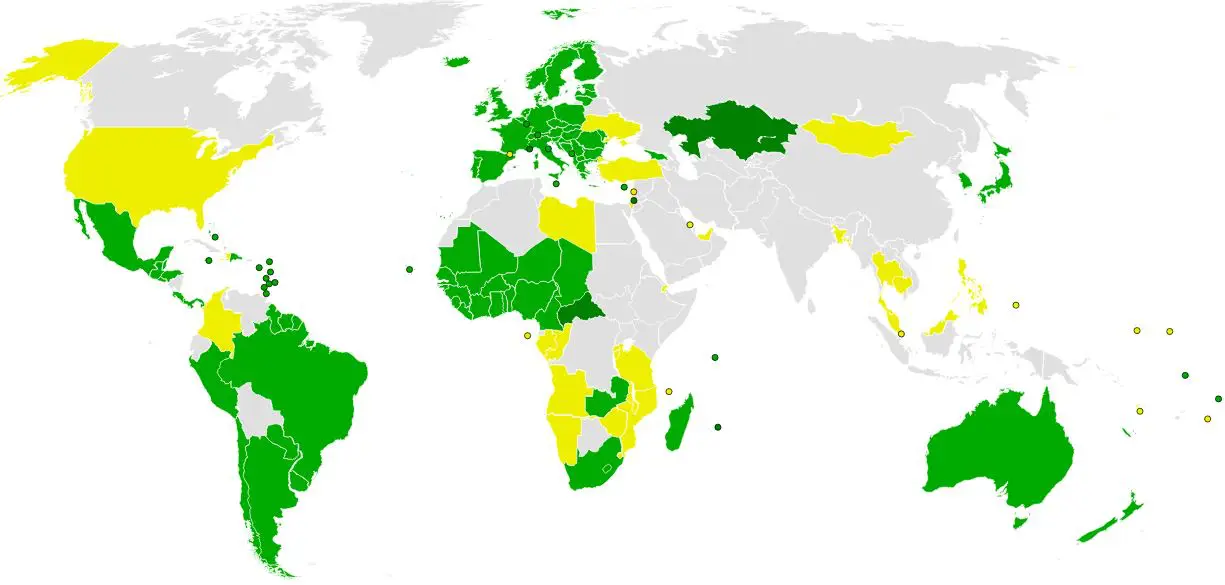Table of Contents
Arms Trade Treaty its loopholes, Origins and USA | UPSC – IAS
The Arms Trade Treaty is a multilateral treaty that regulates the international trade in conventional weapons. It entered into force on 24 December 2014. The Arms Trade Treaty (ATT) is an attempt to regulate the international trade of conventional weapons for the purpose of contributing to
- International and regional peace;
- Reducing human suffering; and
- Promoting cooperation, transparency, and responsible action by and among states.
The roots of what is known today as the Arms Trade Treaty (ATT) can be traced back to the late 1980s, when civil society actors and Nobel Peace Prize Laureates voiced their concerns about the unregulated nature of the global arms trade and its impact on human security.
- It is the first legally binding international agreement to regulate the global trade in conventional arms by establishing common international standards for member countries.
- It has 102 states parties (Lebanon joined last month) and an additional 34 signatories, including the United States, which had signed but did not formally ratify the treaty. Countries who neither signed nor ratified included Russia, China, India, Iran, North Korea, Saudi Arabia and Syria.
- It was endorsed by the UN General Assembly in April 2013, and entered into force on December 23, 2014.
- It regulates ammunition or munitions fired, launched, or delivered by the conventional arms covered under the treaty.
- It requires states to monitor their arms exports, and to ensure their weapons sales do not break existing arms embargoes.
- Nations also need to ensure the weapons they export do not end up being used for genocide, crimes against humanity, war crimes or terrorist acts. If they do find out the arms will be used for any of these, they need to stop the transfer.
Conventional Arms which ATT covers
- Battle tanks
- Armoured combat vehicles;
- Large-calibre artillery systems
- Combat aircraft
- Attack Helicopters
- Warships
- Missiles and missile launchers
- Small arms and light weapons
Origins of Arms Trade Treaty | UPSC – IAS
The ATT is part of a larger global effort begun in 1997 by Costa Rican President and 1987 Nobel Peace Prize laureate Óscar Arias. In that year, Arias led a group of Nobel Peace Prize laureates in a meeting in New York to offer the world a code of conduct for the trade in arms. This group included Elie Wiesel, Betty Williams, the Dalai Lama, José Ramos-Horta, representatives of International Physicians for the Prevention of Nuclear War, Amnesty International, and the American Friends Service Committee.
The original idea was to establish ethical standards for the arms trade that would eventually be adopted by the international community. Over the following 16 years, the Arias Foundation for Peace & Human Progress has played an instrumental role in achieving approval of the treaty.
Arms Trade Treaty and USA | UPSC – IAS
USA President Trump has announced that he will withdraw his country from the International Arms Trade Treaty.
- The Arms Trade Treaty will be opened up for amendment in 2020.
- USA cannot support certain proposed amendments like gun control measures which is viewed as threat to America’s second amendment right to bear arms.
- US has said that treaty “fails to truly address the problem of irresponsible arms transfers” because other top arms exporters – including Russia and China – have not signed up to it.
- Also, according to the Stockholm International Peace Research Institute (SIPRI), the US arms industry accounted for 57 percent of the total Top 100 arms sales in 2017.
loopholes in Arms Trade Treaty | UPSC – IAS
The Amnesty International website “loopholes” include shotguns marketed for deer hunting that are virtually the same as military/police shotguns and rifles marketed for long range target shooting that are virtually the same as military/police sniper rifles. Amnesty International advocates that the civilian guns must be included in any workable arms trade controls; otherwise, governments could authorize export/import of sporting guns virtually the same as military/police weapons in function.
It must be workable and enforceable. It must:
- Provide guidelines for the treaty’s full, clear implementation;
- Ensure transparency – including full annual reports of national arms transfers;
- Have an effective mechanism to monitor compliance;
- Ensure accountability – with provisions for adjudication, dispute settlement, and sanctions;
- Include a comprehensive framework for international cooperation and assistance.
NGOs are also advocating that the ATT must reinforce existing responsibilities to assist survivors of armed violence, as well as identify new avenues to address suffering and trauma.




